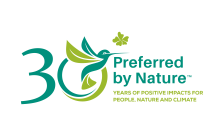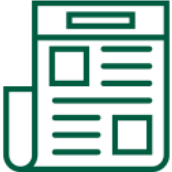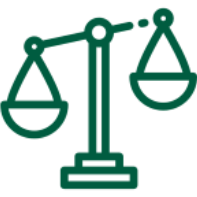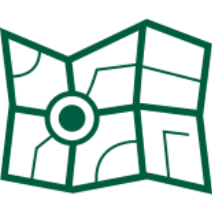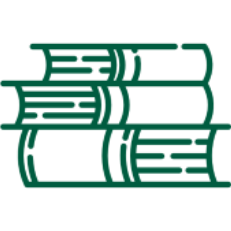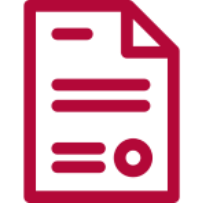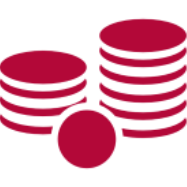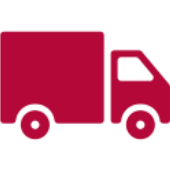Statement on the legality of timber originating from Ukraine
Updated 08 May 2022
A military conflict involving the Russian invasion of Ukraine has taken place with the support and collaboration of Belarus authorities.
A trade ban implemented by the Council of the EU on products from Crimea or Sevastopol due to the annexation of this part of Ukraine has existed since 2014. See Council Regulation (EU) No 692/2014 of 23 June 2014. Imports into the European Union of goods originating in the non-Ukraine controlled areas of Donetsk and Luhansk oblasts are also prohibited in line with Council Regulation (EU) 2022/263 of 23 February 2022.
Based on European Commission guidance on the prevalence of armed conflict and sanctions in Due Diligence Systems there is a risk that products sourced from some parts of Ukraine can be considered high-risk for legal non-compliance, due to the ‘prevalence of armed conflict’ in parts of the country. In these areas, it could be concluded that a de-facto lack of law enforcement in the forest sector may exist due to the armed conflict.
This guidance is mirrored in decisions made by important forest certification schemes:
- A recent statement from PEFC considers that wood-products “…originating from occupied Ukrainian territory is considered ‘conflict timber”.
- FSC has communicated that - in the invaded regions of Ukraine or within armed conflict zones - the norms of Ukrainian legislation cannot be enforced. This position is also reflected in the revised FSC Controlled Wood Risk Assessment for Ukraine which also makes risk conclusions for the Autonomous Republic of Crimea, temporarily occupied by Russia, as well as the Anti-Terrorist Operation zone in the Donetsk and Lugansk regions – zone of armed conflict.
Similarly, the summary record of the Ninth Meeting of the Multi-Stakeholder Platform on Protecting and Restoring the World’s Forests, including the EUTR/FLEGT (29April22) concluded the following guidance in relation to areas not subject to the prohibitions described above:
- Areas of active military hostilities within Ukraine: in those parts of the Ukrainian territory with ongoing military hostilities, active governmental control of timber logging as well as tracking of timber trade is not possible. Third party verification is suspended and operators cannot conduct field checks due to risk of being affected by active military activity. In view of these factors, it is not possible for operators to draw conclusions about a negligible risk level.
- Other parts of Ukraine: In areas not subject to active military hostilities, the situation remains highly volatile. While challenges exist for the possibility to minimise the risk of sourcing timber in contravention of the applicable Ukrainian legislation, it is possible for operators to place on the market if negligible risk is achieved. However, the conclusions on timber imports from Ukraine of the 2nd meeting of the Multi-Stakeholder Platform on Protecting and Restoring the World’s Forests, including the EUTR/FLEGT (09December20) remain valid. See the specific guidance and annex in relation to Ukraine, from this meeting.
Guidance:
For companies based in the European Union:
It is not possible to legally import wood-products from Crimea or Sevastopol, nor from the non-Ukraine controlled areas of Donetsk and Luhansk oblasts.
Preferred by Nature recommends that companies carefully monitor the situation, and exercise additional caution in their due diligence process, if timber is being sourced from the remainder of Ukraine. According to the EU Timber Regulation, due diligence needs to be applied on imports from Ukraine. Companies must assess risks in relation to armed conflict in zones where a de-facto lack of law enforcement in the forest sector may exist due to the armed conflict:
- Cease sourcing from areas temporarily occupied by Russia or areas of active military hostilities within Ukraine.
- For other parts of Ukraine not subject to active military hostilities, the situation remains highly volatile. While challenges exist for the possibility to minimise the risk of sourcing timber in contravention of the applicable Ukrainian legislation, it is possible for operators to place on the market if negligible risk is achieved. However, the following guidance should be followed.
- Guidance and annex in relation to Ukraine, from the 2nd meeting of the Multi-Stakeholder Platform on Protecting and Restoring the World’s Forests, including the EUTR/FLEGT.
- Ninth Meeting of the Multi-Stakeholder Platform on Protecting and Restoring the World’s Forests, including the EUTR/FLEGT (29April22)
- EC guidance on armed conflict and sanctions in Due Diligence Systems
For companies based outside of the European Union:
Carefully monitor the situation, and exercise additional caution in their due diligence process, if timber is being sourced from Ukraine.
Timber Risk Score: 12 / 100 in 2021. The Timber Legality Risk Assessment for Ukraine contains an evaluation of the risk of illegality in Ukraine for 6 categories and 26 sub-categories of law.
Ukraine has around 9.7 million hectares of forest land (FAO, 2020), representing 16.7% of the total land area. Only 0.6% are primary forests, 49% are naturally regenerated forests, and over 50%, are planted forests.
The vast majority of forests (nearly 87 %) are state-owned, while 13% of forestry land plots are attributed to communal and private property. State Forest Resources Agency of Ukraine (SFRA) and other central government bodies manage the state-owned forest.
Illegal logging is a considerable problem in Ukraine (Regional Environmental Center, 2010) due to illegal logging, illegal wood exports, and timber-related corruption. Ukraine is also a complex country because of the imperfection of the current legislation and the existence of conflicts between laws.
Score: 32 / 100 in 2021
Rank: 122 out of 180 countries in 2021
A 10-year ban on the exports of all types of raw logs (HS code 4403) has been in place since 2015. The ban does not cover logs intended for use as fuel, limited to logs of less than 2 meters in length.
Under revision
None listed
FSC Certified Forest Area: 3,763,641 hectares (October 2021).
PEFC Certified Forest Area: 44,021 hectares (September 2021).
Information Gathering
Timber sources
- Find out the different sources of legal timber
- Determine which source type your timber comes from
- Find out the main documents that can be used to indicate legality throughout the supply chain
| Timber source types | Description of source type |
|---|---|
|
A. Forest owned by the state and managed by SFRA |
State-owned subordinated to and managed by the State Agency of Forest Resources of Ukraine (SFRA) under the Ministry of Environmental Protection and Natural Resources. These areas include production forests, protected forests (nature conservation forest and forest delivering other ecosystem services) and cover 73% of all forests in Ukraine |
|
B. Forest managed by other entities |
Forest areas of communal and private ownership and state ownership, subordinated to entities other than SFRA: |
Risk Assessment
Risk assessment summary
|
Legal rights to harvest
|
|
|
|
Taxes and fees |
|
|
|
Timber harvesting activities
|
|
|
|
Trade and transport |
|
|
Processing  |
|
Risk Mitigation
Mitigate the risks in your supply chain
Learn which actions we recommended to mitigate the risks associated with the timber sources from Ukraine by looking at our Risk Mitigation Guide.
Source Certified Materials
Preferred by Nature believes that third party certification (for example FSC and PEFC certification) can provide strong assurances of the legality of the products they cover. Companies seeking to mitigate the risks of sourcing illegal timber should seek to purchase third party certified materials wherever possible.
While the European Timber Regulation does not include an automatic “green lane” for certified products, it does recognise the value of certification as a tool for risk assessment and mitigation. The European Commission says that companies “may rate credibly certified products as having negligible risk of being illegal, i.e. suitable for placing on the market with no further risk mitigation measures, provided that the rest of the information gathered and the replies to the risk assessment questions do not contradict such a conclusion.”
For more information on using certified materials in your due diligence, including how to assess whether a certification system meets EUTR requirements, see the page on Certification and Due Diligence.
How to mitigate risks for timber from Ukraine
There are five generally recommended actions to mitigate the risks associated with the timber sources from Ukraine:
1. Fully map your supply chain
- Our supply chain mapping tool can help you do this.
2. Obtain and verify documents
3. Consult with stakeholders
4. Carry out on-site verification
5. Conduct targeted timber testing
- Conduct timber testing on samples of purchased material to verify the species or origin of timber, where appropriate
